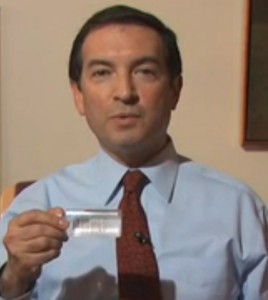Fighting Flu: "Feet Dry" to Mass Vaccinations
-
-
slice.mit.edu
Filed Under
Recommended

Facing a potential flu epidemic in autumn 2012, MIT Medical mobilized to provide more than 13,000 vaccinations on campus to students, employees, and retirees. Years of planning and drills by the campus Emergency Operations Center plus advance preparation starting in summer, resulted in an impressive inoculation rate of 500 people per hour in several mass flu clinics.
Debbie Friscino, MIT Medical's director of operations, described how clinicians and nurses from local nursing schools administered injections at 15 stations in the Student Center. Other groups distributed forms, directed people through the stations, and watched for reactions.
Although flu season has peaked this year, Friscino emphasized the ongoing public health effort to remind people about covering their coughs and frequently washing their hands. A popular video by Dr. Howard Heller, chief of internal medicine, explains how to minimize disease exposure even in airplanes with coughing flight attendants. It's not too late to get a flu shot.

Long before mass inoculations, MIT coped with periodic flu epidemics through quarantines and similar advice about washing hands. But the Spanish flu pandemic required more extreme measures as it devastated Boston, killing tens of thousands of residents between September 1918 and January 1919. This flu strain disproportionately struck down young adults, so MIT faced a double threat because of its youthful population and barracks on campus for training World War I aviators.
To minimize exposure, MIT closed for three weeks at the start of the 1918 fall semester. The registrar ordered all students to “keep away from the Institute until further notice,” The Tech reported on Oct. 2, 1918.
Despite these precautions, flu swept through the student body. When the on-campus Naval Aviation hospital was torn down in spring 1919, The Tech described how during the previous semester, “out of the 800 or 900 aviation students stationed here, more than 300 [were] in the infirmary.”
A new, serious flu strain appeared in 1928. On January 7, 1929, The Tech warned that students who had traveled west were the "most likely to be exposed.”
To stave off local flu cases, Dr. George Morse, head of the Medical Department, urged students to “eat plenty of nourishing food,” wash their hands before dining, keep their feet dry, and get enough rest in well-ventilated rooms. In addition, they should avoid Pullman Sleepers [on overnight trains], and “cover telephone mouth-pieces with tissue paper, date with rubber stamp and change daily.”







